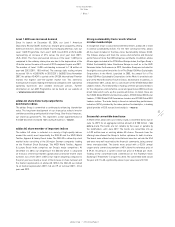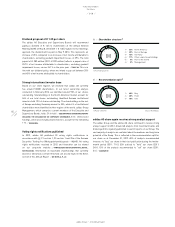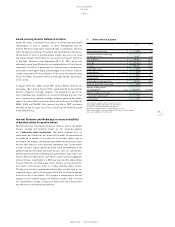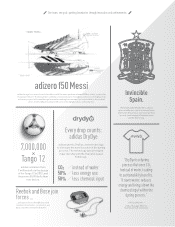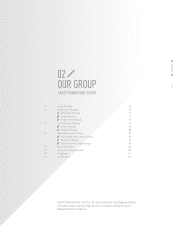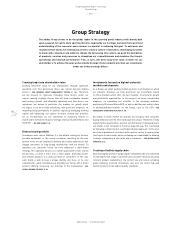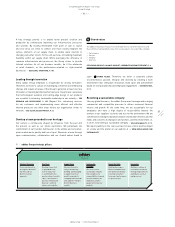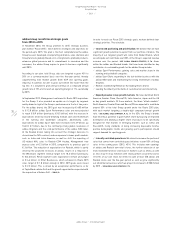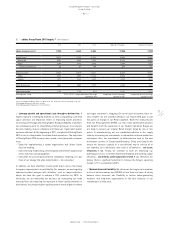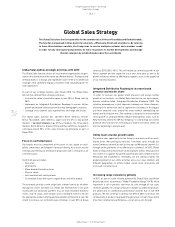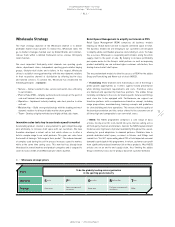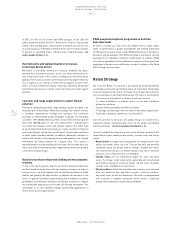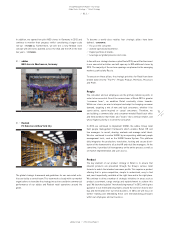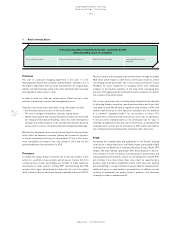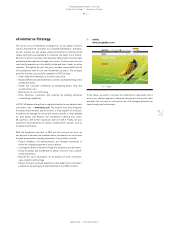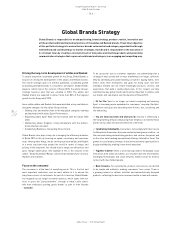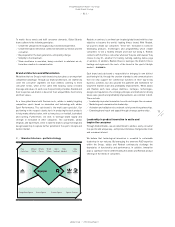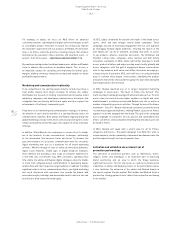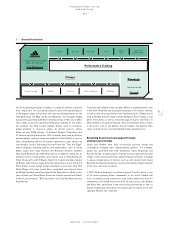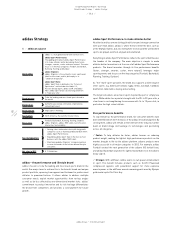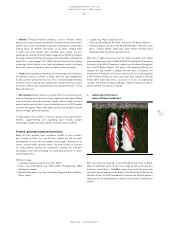Reebok 2012 Annual Report Download - page 95
Download and view the complete annual report
Please find page 95 of the 2012 Reebok annual report below. You can navigate through the pages in the report by either clicking on the pages listed below, or by using the keyword search tool below to find specific information within the annual report.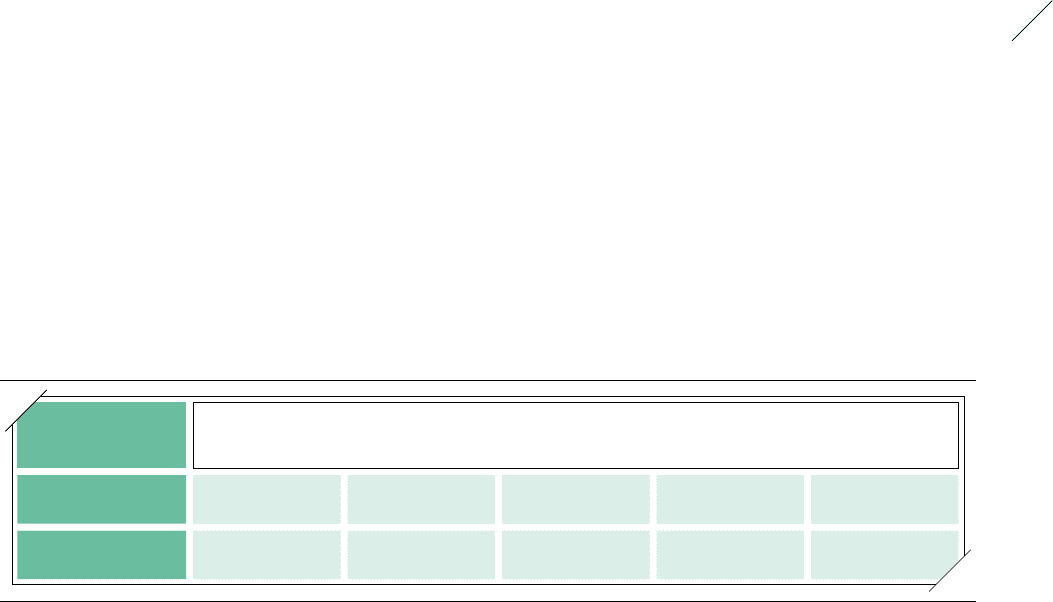
adidas Group
/
2012 Annual Report
Group Management Report – Our Group
73
2012
/
02.2
/
Global Sales Strategy
/
Wholesale Strategy
Wholesale Strategy
The main strategic objective of the Wholesale channel is to deliver
profitable market share growth. To realise this, Wholesale takes the
go-to-market strategies handed over by Global Brands and commer-
cialises them within a defined framework across various third-party
retail channels.
Our most important third-party retail channels are sporting goods
chains, department stores, independent sporting goods retailer buying
groups, lifestyle retail chains and e-tailers. In this respect, Wholesale
strives to establish strong partnerships with the most dynamic retailers
in their respective channel of distribution by offering best-in-class
and tailored services. To achieve this, Wholesale has established the
following principles
/
DIAGRAM 01:
/
Service – Deliver excellent sales service and world-class efficiency
to our retailers.
/
Point of Sale (POS) – Amplify our brands and concepts at the point of
sale in all relevant customer segments.
/
Operation – Implement industry-leading sales best practice to drive
sell-out.
/
Relationships – Build strong relationships with the leading and most
dynamic retailers to drive profitable market share growth.
/
Team – Develop a highly motivated and highly skilled sales team.
Innovative sales tools key to accelerate speed to market
Accelerating product creation is a key element to gain competitive edge
and, ultimately, to increase shelf space with our customers. We have
therefore developed a virtual sell-in tool which allows us to offer a
holistic sample range to our retail partners. This gives our sales force
the benefit of having a “full range in their pocket”. The reduced amount
of samples used during the sell-in process increases speed to market,
while at the same time saving costs. This new tool has already been
introduced in several markets and product categories and is targeted to
cover in excess of 60% of all Wholesale pre-orders by 2013.
Retail Space Management to amplify our brands at POS
Retail Space Management (RSM) comprises all business models
helping our Global Sales function to expand controlled space in retail.
The business models we are bringing to our customers are designed
to amplify adidas and Reebok presence and visibility in-store. To make
this a success, Wholesale is cooperating with retailers along the entire
supply chain to the point of sale. By helping to increase profitability
per square metre for the Group’s retail partners as well as improving
product availability, we can achieve higher customer satisfaction, thus
driving share of retail shelf space.
The two predominant models to drive the success of RSM for the adidas
Group are Franchising and Never-out-of-stock (NOOS).
/
Franchising: Mono-branded store franchising is one of the Group’s
prime growth opportunities as it offers superior brand presentation
while limiting investment requirements and costs. Franchise stores
are financed and operated by franchise partners. The adidas Group
normally contributes to the costs for brand-specific fixtures and fittings
each store has to be equipped with. Furthermore, we support our
franchise partners with a comprehensive franchise concept, including
range propositions, merchandising, training concepts and guidelines
for store building and store operations. This ensures that the quality of
the brand presentation and the service offered to the consumer are at
all times high and comparable to our own-retail stores.
/
NOOS: The NOOS programme comprises a core range of basic
articles, mostly on an 18- to 24-month life cycle, that are selling across
all third-party channels and markets. Overall, the NOOS replenishment
model secures high levels of product availability throughout the season,
allowing for quick adaptation to demand patterns. Retailers have to
provide dedicated retail space, co-invest in fixtures and fittings and
commit to a “first fill” representing about 25% of total expected seasonal
demand to participate in this programme. In return, customers can profit
from significantly reduced inventory risk on these products. Most NOOS
articles are on an end-to-end supply chain, thus limiting the adidas
Group’s inventory risk as we re-produce based on customer demand.
01
/
Wholesale strategic pillars
Vision To be the globally leading sales organisation
in the sporting goods industry
Objectives Service POS Operation Relationships Team
Strategy Sales tools Space management
excellence Game plan Customer management
excellence PEAK


